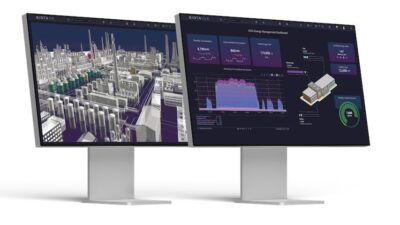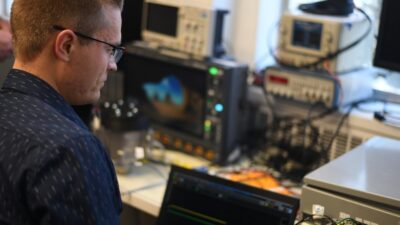In order to keep pace with value-added demands of the automotive and architectural glass markets, PPG Industries uses computer modeling and experimental design techniques to engineer high performance coated glass products. Costly production trials were a means of obtaining test samples to verify quality and performance characteristics before a coated product is commercialized.
In order to keep pace with value-added demands of the automotive and architectural glass markets, PPG Industries uses computer modeling and experimental design techniques to engineer high performance coated glass products. Costly production trials were a means of obtaining test samples to verify quality and performance characteristics before a coated product is commercialized. To reduce the expense and inconvenience of production interruptions, the laboratory pilot operation was developed.
Prototypes
Data Science Automation Inc. (Pittsburgh, Pa.), a full-service software and systems engineering firm, was contracted to supply the data acquisition, control, and presentation system. The resulting automated pilot coating system is key for PPG to rapidly prototype new coating technologies used over a wide range of operating conditions.
Automated batch control is achieved with an intuitive spreadsheet interface that communicates between the researcher designing the experiments and the technician operating the test facility. This not only controls the setpoints for numerous heater temperature controls, flow controls, and others, but also tells the system which chemistry feeds are to be used in any particular aspect of the coating. In addition, an intuitive HMI exists for viewing the process with a variety of custom graphics.
The controls are networked for remote access to make configuration changes, share results of experiments, and provide spreadsheets of batch control data.
System configuration
The ability to customize the user interface, inputs and outputs, and rapidly develop new experiment scenarios prompted PPG to select a high-speed, Intel-based computer, an instrumentation-class A/D converter, five 12-slot SCXI signal conditioning chassis, and two-axis motion control hardware from Parker Compumotor. The new system runs on standard Microsoft Windows 95 and spreads the connections to over 250 I/O points among the 12 slots in the SCXI chassis.
Programming language solution
PPG’s need for user interface flexibility convinced Data Science Automation to provide a programming language solution. The company chose BridgeView graphical programming language from National Instruments (Austin, Tex.) for ease of customization and simple, full-featured funtionality for communicating with data acquisition and motion control hardware.
The main user interface has three concurrently running panels. Buttons on the left side enable the user to start and stop a batch, begin a chemical feed, show trends, select a graphic, and choose from a variety of customized faceplates.
The top window indicates alarms, and includes a button to acknowledge them or to invoke BridgeView’s Historical Trend Viewer. The top window also indicates which portion of the batch is in progress.
The main body of the display contains custom graphics which include display of process variables, status of valves and heaters, and other elements using standard ISA and customized symbols. Piping changes color based on the status of the valves and other discrete components of the system. The BridgeView Engine, in conjunction with the setup of the Tag Configuration Editor, handles all data acquisition, process control, and database logging activities.
Historical data can be obtained at any time through the Historical Trend Viewer by clicking on the "History" button at the top of the display. It includes zooming features, automatic movement back in time through multiple data files, and utilities to export the data to a spreadsheet file format.
The application runs continuously through several different experiments contained in a common spreadsheet of batch data. Whenever the system is to be shut down, an exit button first provides a warning confirmation to the operator, followed by an orderly closing of the programs. All of the tuning parameters for the PID control loops are stored on the disk as initialization parameters for the next start-up procedure.
The new system provides fully customized displays, real-time and historical trends, alarming of any variable in the system, batch automation via a simple spreadsheet data file, and custom faceplates for each control function in the system to provide complete manual control. This solution offers PPG Industries a state-of-the-art hardware and software platform leveraging them for the overwhelming trend toward PC-based virtual instrumentation and automation systems long into the future.
Comments? Send e-mail to: [email protected]
For information from Data Science Automation, from National Instruments, visit www.controleng.com/info .
| Author Information |
| Jay E. Grassel, Sr. is automation consultant, and Richard M. Brueggman is president with Data Science Automation Inc. (Pittsburgh, Pa.).
Data Science Automation Inc. is a CSIA member as of 3/2/2015 |


